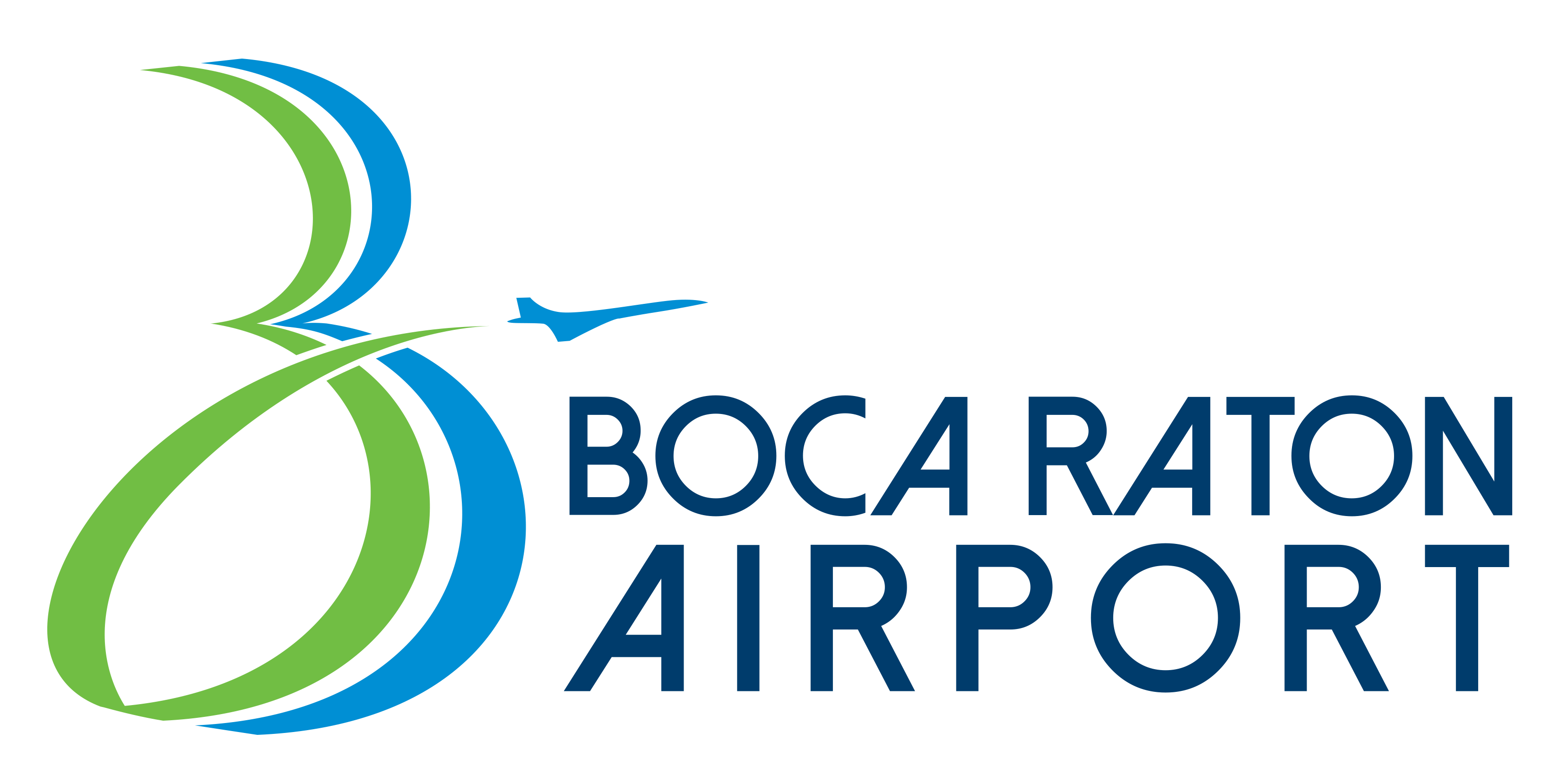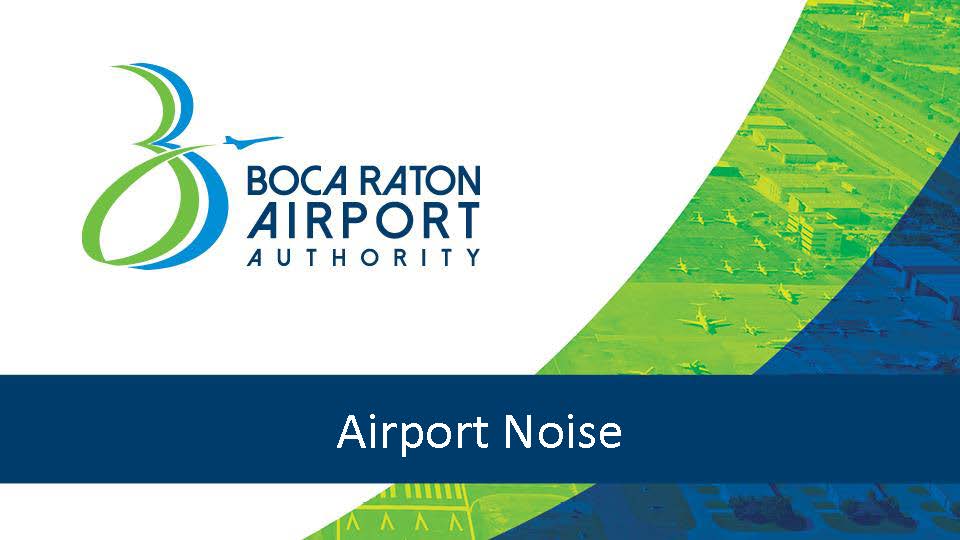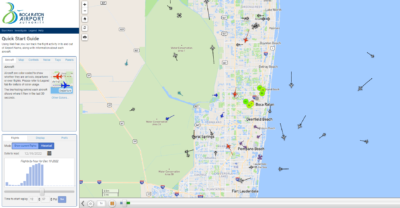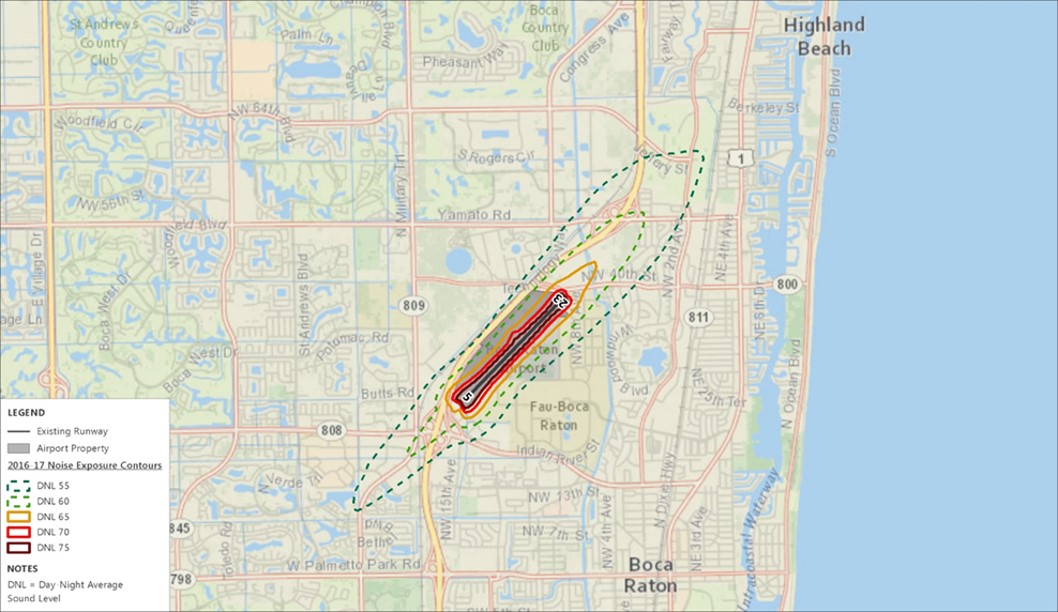Boca Raton Airport and Aircraft Noise
When moving to a new home it is important to understand the implications of air traffic.
It is important to visit your potential home to see if the aircraft activity is compatible with your way of life.
A little about the Boca Raton Airport:
- The Boca Raton Airport is located east of interstate 95, between Glades Rd. and Spanish River Blvd.
- The airport has one runway named 5/23. This runway name is determined by its heading. This means that the runway at the Boca Raton Airport has a compass heading of 50 degrees one direction and 230 degrees other, which is roughly a northeast or southwest. The runway position plays an important part in determining aircraft traffic.
- The airport is open 24 hours a day, 7 days a week. The airport has a voluntary curfew from 10:00 PM – 7:00 AM, however this program is strictly voluntary, and the Airport is unable to enforce any mandatory access restrictions.
- The Boca Raton Airport has an Air Traffic Control Tower which is open from 7:00 AM – 11:00 PM. When the tower is open, aircraft receive take-off and landing clearance and directional guidance from the air traffic controller. When the tower is closed, the airport is still open and aircraft “self-announce” their intentions. This means they talk to each other over the radio to ensure that they fly safely.
What causes airplane noise?
Thanks to technology and federal requirements, airplanes are getting quieter. In fact, all jets flying into Boca Raton Airport meet or exceed the FAA’s noise limits for engine noise. However, low flying aircraft can be annoying and, unfortunately, low flying aircraft near an airport are inevitable. Certain areas will experience more low flying aircraft than others depending on location. Additionally, different phases of flight produce different types of noise.
Take-Offs
Departures are the loudest phase of flight, due to the aircraft engines being at their highest power. This can be offset with the aircraft’s ability to climb quickly. If your potential home is in a common departure path, it is important for you to weigh the pros and cons of aircraft noise during departure.
When an aircraft is departing, the aircraft is able to gain altitude quickly. These higher aircraft are less noisy and tend to be less bothersome farther away from the airport. Departing aircraft also have much more flexibility in direction of flight after take-off. This means departing aircraft may be observed over a wider area, but also means pilots are better able to follow the Airport’s recommended noise abatement procedures.
Landings
Aircraft on approach to land have very little flexibility with their direction of flight as they begin to align themselves with the runway. This leads to a much higher concentration of aircraft over a specific path. While this concentration of flight paths can extend several miles from the airport, it becomes denser closer to the airport. Airplanes are usually at lower altitudes as they get closer to the airport and eventually touch down.
Airplanes land and takeoff in the direction of the wind, which for Boca Raton means most of the time, airplanes land from the southwest and takeoff to the northeast. It is important to understand the different noise characteristics of arriving and departing aircraft, as the direction will change based on weather.
Home Buying Tips
We encourage home buyers to visit the home multiple times, on different days, at different times – this will increase your chances at experiencing aircraft flights overhead to see what impact it would have on daily life. Make sure to visit the inside as well as the outside of the house during these visits
Be specific and be sure to ask your realtor, neighbors, and the current owner if possible, about aircraft noise. Also inquire about any existing complaints or easements attached to the house deed. Read the easement so you are aware of noise complaint procedures.





